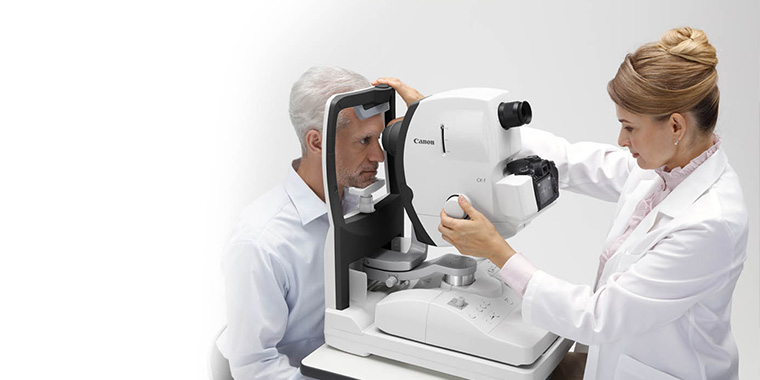Andalusia Eye Center: Premier Services for Vision Modification
Andalusia Eye Center: Premier Services for Vision Modification
Blog Article
The Pros and Cons of Various Refractive Surgical Procedures for Enhanced Eyecare

LASIK Surgical Procedure
LASIK surgical procedure is a frequently executed refractive treatment that intends to fix vision problems such as nearsightedness, astigmatism, and farsightedness. This medical method has actually acquired popularity because of its performance in giving people with more clear vision and lowering their reliance on glasses or get in touch with lenses. During the treatment, a thin flap is created on the cornea, and a laser is made use of to reshape the underlying cells, correcting the refractive mistake. The flap is then repositioned, permitting for fast healing and marginal pain for the person.
One of the primary benefits of LASIK surgery is the rapid renovation in vision experienced by numerous clients. It is necessary for individuals taking into consideration LASIK surgical procedure to undergo a thorough analysis by an eye care expert to establish if they are ideal prospects for the treatment.
PRK Procedure
The PRK procedure, additionally known as Photorefractive Keratectomy, is a kind of refractive surgery that aims to deal with vision concerns similar to LASIK surgery. Unlike LASIK, which includes developing a flap in the cornea, PRK functions on the surface area layer of the cornea.
Among the benefits of PRK over LASIK is that it gets rid of the threat of flap-related issues since no flap is produced during the surgical treatment. This can be beneficial for people with slim corneas or those involved in contact sports where eye trauma is a possibility. The recovery time for PRK is usually longer compared to LASIK, as the outer layer of the cornea requires time to regenerate after the treatment. In spite of the longer recovery duration, PRK can be a suitable choice for individuals looking for vision adjustment surgical treatment.
SMILE Surgical Procedure
An innovative refractive surgery strategy getting popularity in the area of ophthalmology is SMILE Surgery. Tiny Cut Lenticule Extraction (SMILE) is a minimally intrusive procedure that corrects vision by improving the cornea making use of a femtosecond laser. Unlike conventional LASIK surgical treatment, SMILE Surgical treatment includes developing a little laceration in the cornea to extract a lenticule, which causes much less interruption to the corneal framework and potentially much faster recovery times.
Among the main advantages of SMILE Surgical procedure is its ability to treat nearsightedness (nearsightedness) and astigmatism with high accuracy, leading to superb visual outcomes for people. The minimally intrusive nature of the treatment also decreases the threat of difficulties such as completely dry eye disorder, making it a beneficial option for people looking for refractive surgical treatment.

LASEK Technique
Having checked out the advantages and factors to consider of SMILE Surgery, one more significant refractive surgical procedure technique worth checking out is the LASEK Technique. LASEK, which stands for Laser-Assisted Subepithelial Keratectomy, is a type of laser eye surgery that intends to correct refractive mistakes such as nearsightedness (nearsightedness), hyperopia (farsightedness), and astigmatism.
Unlike LASIK, LASEK does not include developing a corneal flap. Rather, during a LASEK procedure, the doctor utilizes a watered down alcohol option to loosen the slim external layer of the cornea, referred to as the epithelium. This layer is then gently moved apart to enable the laser to reshape the underlying corneal tissue. As soon as the cornea has been improved to the preferred level, the epithelial layer is repositioned.
One of the key benefits of LASEK is that it can be ideal for individuals with slim corneas who may not be excellent prospects for LASIK. Additionally, LASEK usually results in minimal post-operative pain and a quicker recovery time compared to PRK. The aesthetic recovery procedure with LASEK may be somewhat longer than with LASIK.
Implantable Get In Touch With Lenses
Implantable Contact Lenses provide a long-lasting vision modification remedy for people seeking an option to conventional call lenses or glasses. These lenses, also referred to as phakic intraocular lenses, are operatively inserted right into the eye to fix refractive mistakes such as nearsightedness (nearsightedness), hyperopia (farsightedness), and astigmatism. neurologist Andalusia. Unlike standard call lenses that remain on the surface of the eye, implantable contact lenses function within the eye itself, offering clear vision without the need for everyday upkeep or removal
One of the vital advantages of implantable call lenses is their permanence. Once inserted, they can continue to be anchor in the eye forever, using secure and regular vision adjustment. Furthermore, these lenses can be a superb choice for individuals who are not excellent prospects for laser eye surgery or who choose a reversible vision correction treatment.
However, implantable contact lenses do carry some dangers, including the potential for cataracts or enhanced eye stress. It is essential for people considering this alternative to talk to an eye care expert to determine if implantable get in touch with lenses are the appropriate option for their particular requirements and eye wellness.
Verdict
In conclusion, each type of refractive surgical treatment has its own benefits and downsides. LASIK surgery is prominent for its quick healing time, while PRK treatment may be ideal for people with thin corneas.

In General, SMILE Surgical treatment provides an appealing choice for people looking to enhance their vision via refractive surgical procedure.
Report this page